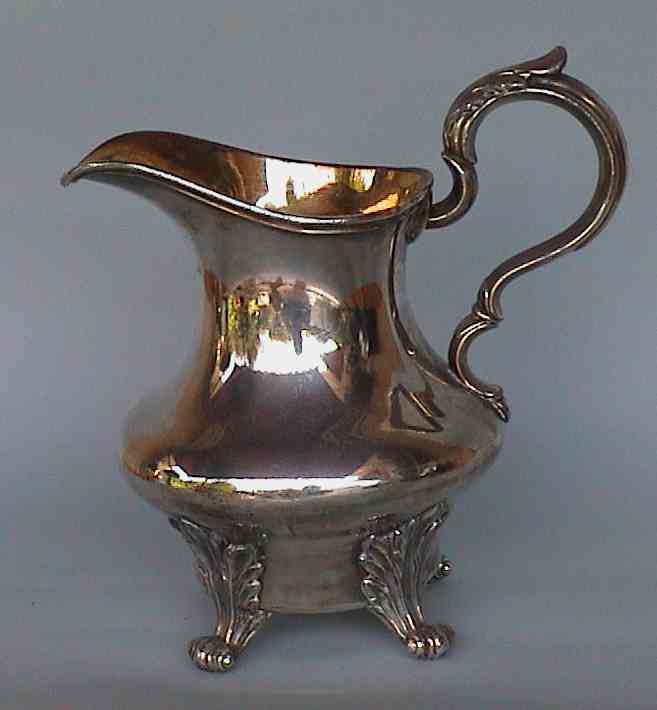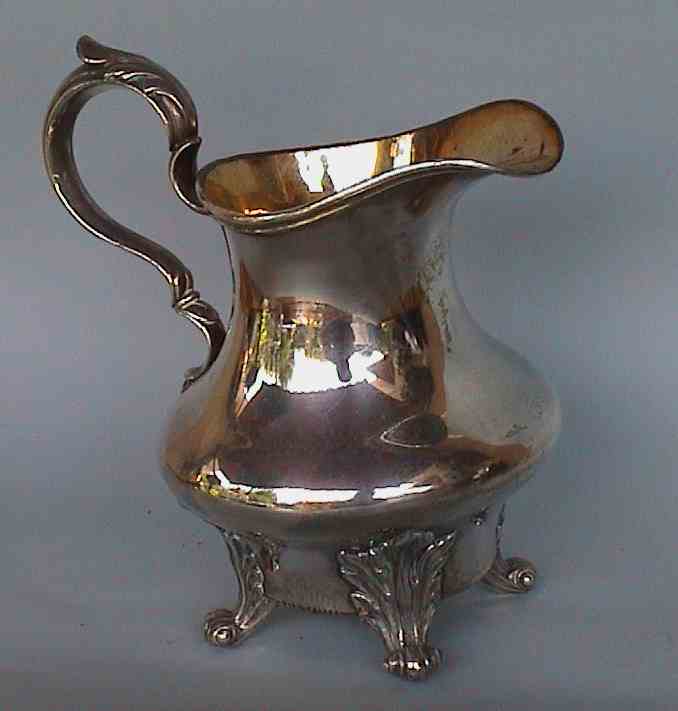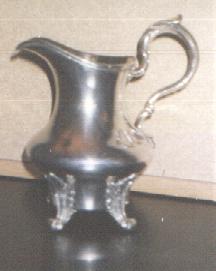 this is a "sheffield plate" milk jug with gilt interior, made circa 1830.
this is a "sheffield plate" milk jug with gilt interior, made circa 1830.The milk jug has plain body, leaf capped double scroll handle and is raised on four floral feet.
It is marked on the bottom with number "1354" and a bird's head.
The use of "sheffield plate" began in 1742 when Thomas Boulsover, a Sheffield cutler (bladesmith), discovered that a sheet of silver fused to a piece of copper could then be rolled or hammered out without fracturing the bond.
This made possible the use of "plated" base metal, which appeared, outwardly, to be silver, but as the silver "skin" could be only a small proportion of the gauge of the metal the saving in expense was considerable and objects made from the product looked exactly like sterling silver, because the applied "plate" was indeed sterling.
Boulsover's idea was exploited in Sheffield, first by Joseph Hancock from 1755 onwards and as soon as he got wind of it by Matthew Boulton, one of the greatest manufacturers of his age.
The use of "sheffield plate" (called also "old sheffield") declined around 1840, when "electroplating" was invented. This is a system which allows to deposit a thin layer of 99,99 per cent pure silver, obtaining a less expensive but rather less attractive sheen when polished.
The milk jug is 6 1/4 in. high (cm. 16) and was bought from an Italian dealer at an Antique Fair.

